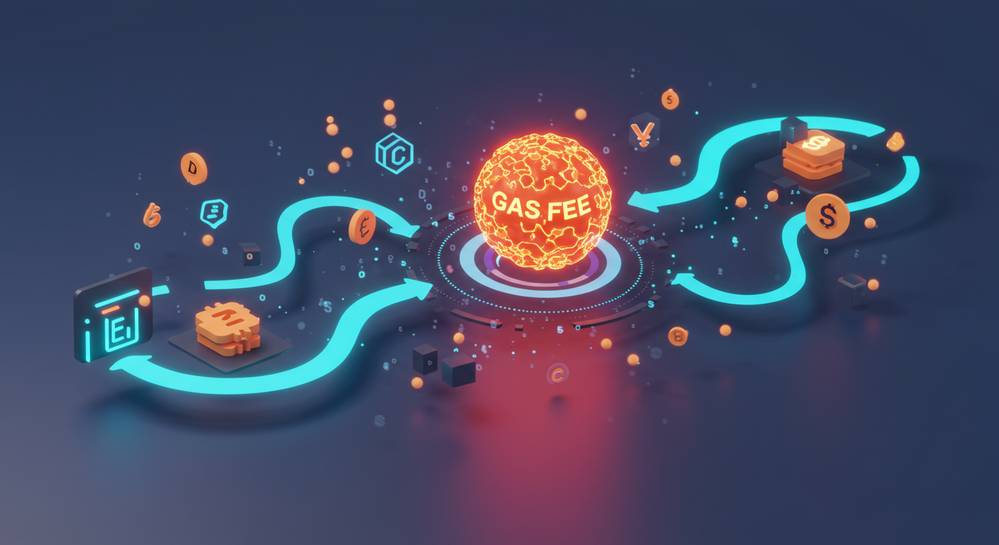Exploring the Types of Consensus Mechanisms: Blockchain’s Backbone
In the buzzing world of blockchain, types of consensus mechanisms in blockchain stand as the unsung heroes. They are what keep every node in a vast network in check, making sure everyone agrees without a central authority. Think of them like the rules of a game, ensuring fair play and trust among players you can’t see. Here, we dive into the different ways blockchains reach this trust. We’ll look at the popular Proof of Work and Proof of Stake methods, take a turn around advanced algorithms, and yes, tackle the tough stuff too—like scalability and energy use. We’re on a journey to understand the heart of blockchain and what makes it tick. Let’s break it down together and see what future these mechanisms hold in store.
Understanding Blockchain Consensus Protocols
Defining Consensus in the Blockchain Realm
Blockchain makes sure everyone agrees on the data, without needing trust. It’s essential. Nodes, or computers in the network, hold the power. They work to agree on data, blocks, and ledgers. Think of it as having many eyes on every piece. It makes cheating hard. Nodes must clear the same hurdles to add a new block to the chain.
Let’s say Alice sends Bob five coins online. Every node checks this. They validate that Alice has the coins. She hasn’t sent them twice. They all use the same rules for this.
These rules or consensus methods vary, but all seek the same goal: harmony in data with no need for trust.
The Significance of Consensus Mechanisms in Distributed Ledger Technology
In blockchain, consensus keeps data secure and consistent across each ledger. Each block added needs a network nod. It’s the system’s green light. Without this, there’s no trustworthiness. No trust, no blockchain use.
Think of a public ledger in a bank without locks or guards. Imagine all around it, making sure everything is right. That’s blockchain’s consensus. It’s the lock and the guard. It’s the core of blockchain’s promise of secure, dependable data sharing. Each new link, each coin move, relies on it.
This trust framework is why blockchain stretches far today. From coins to contracts, it’s used in many ways and places. It keeps everything in line, making sure each piece fits snug, no matter the size of the network. This peace of mind is priceless. It pulls more eyes, more uses, to the blockchain world.
Proof of Work and Proof of Stake lead the pack in popularity. They show how a digital agreement can work without trust. But they consume much power and can slow things down.
Therefore, newer ways like Delegated Proof of Stake seek a fix. They cut power use and speed things up. This invites folks to jump on board, fueling blockchain’s march forward.
Blockchain safety and flow rest on consensus. It ties every piece to a strong, nonstop, and honest chain. And as we chase better speed, cost, and greenness, needing fewer resources, these methods will evolve.
They’ll shape how we talk, trade, and trust in the future. So we watch and work on these protocols. We know they hold the key to a web that’s secure and in sync.
Now we’ve walked through what blockchain consensus is all about. And why it’s the backbone of this new tech wonder. It’s a way to ask everyone in the room if they agree. And it’s a nod or a shake of the head that makes the net tight and strong.
With this in mind, we dive deeper into the major players on this field. Proof of Work and Proof of Stake often grab the headlines, but so much lies beyond. As we peek into these realms, we can better understand the blockchain’s unique heartbeat.

Proof of Work (PoW) Versus Proof of Stake (PoS)
The Mechanism and Impact of Proof of Work
Let’s talk about how blockchains stay safe and agree on data. Think about a group of friends who need to agree on a single truth without a boss. They use rules, and these rules are blockchain consensus protocols. Proof of Work (PoW) is one such rule in the world of blockchain. But what is Proof of Work?
Proof of Work is a way to agree on blockchain updates. It uses hard math puzzles. Miners solve these to add new blocks of data. When they solve it, they prove their work to others. This keeps the chain safe. It stops bad folks from messing with the data. But solving these puzzles needs lots of computer power, which uses lots of energy.
PoW made Bitcoin famous. But it has a downside: energy use. A single Bitcoin transaction uses the same energy as thousands of credit card payments. We need to keep our planet safe, so many started to look for other ways.
Proof of Stake and its Evolution into Delegated Proof of Stake (DPoS)
Now let’s shift to Proof of Stake (PoS). It’s another rule for blockchain safety. But it works very different from Proof of Work. What is Proof of Stake?
Proof of Stake lets a person help run the blockchain based on their coin amount. The more coins they lock up, the more power they have. This is called staking. It’s like holding a ticket in a raffle. The more tickets, the better the chance to win and validate a block.
Why is Proof of Stake important? It uses less energy. It’s more like a game of chance than solving tough puzzles. This means computers don’t have to work as hard. We save energy and still keep the chain safe.
But then came Delegated Proof of Stake (DPoS). Think of DPoS as choosing class reps instead of everyone voting on everything. People choose a few to validate blocks. This can make things even faster.
In PoS and DPoS, hackers need lots of coins to attack. This makes attacks costly and less likely. Plus, if they try and fail, they can lose their coins. This risk keeps them in check.
In choosing PoS or DPoS, we care about speed and keeping the planet green. Less energy use is good for our world. But there’s also a trade-off. These systems can lead us to have big coin holders with much power. That can feel less equal than Proof of Work.
In blockchain, we keep looking for the balance. We want fast, fair, and planet-friendly ways to agree. Whether PoW, PoS, or DPoS, they all aim to keep blockchain fair and safe. But as we grow and learn, we keep searching for even better ways.

Advanced Consensus Algorithms and Their Use Cases
Exploring Byzantine Fault Tolerance (BFT) and Practical Byzantine Fault Tolerance (PBFT)
Let’s talk about keeping blockchains safe and agreeing on one truth. BFT stands for Byzantine Fault Tolerance. What is it? BFT is like a guard that protects the blockchain. It stops faulty nodes from causing trouble. For instance, if some nodes lie or break down, BFT keeps the blockchain working right. It’s important for systems that can’t afford errors, like how banks move money.
Now, there’s a smart version, Practical Byzantine Fault Tolerance, or PBFT. PBFT is BFT made better for real use. It’s faster and uses less power. This helps big systems agree on what’s true, without slowing down. With PBFT, even if some nodes are bad, a blockchain can still run smoothly and quickly. For systems needing quick agreement, PBFT is a top choice.
Examining Proof of Authority (PoA), Proof of Elapsed Time (PoET), and Other Emerging Mechanisms
Emerging mechanisms are changing the game. PoA, or Proof of Authority, is a system where trusted users are in charge of the blockchain. It means only certain, picked users can add new blocks. This is good for when a group wants to have more control.
Then there’s PoET, short for Proof of Elapsed Time. Imagine putting your computer to sleep and the first one to wake up gets a prize. That’s PoET. It is fair because it’s like a lottery where everyone has a chance to win. It’s also very energy smart. It’s great for systems wanting to cut energy use.
There are more ways to reach consensus too. We have Proof of Space, where using hard drive space helps secure the system, or Proof of Burn, where coins are sent to an unusable address. This “burns” them and helps keep the network safe.
Every blockchain has a job to do. And each job might need a different guard – a unique consensus mechanism. It’s all about picking the right one for the task.
Node validators? They’re the workhorses. They do the heavy lifting in agreeing on the blockchain’s truth. Mining difficulty is like a puzzle, keeping blockchain fair and safe. Staking in blockchain is like putting your chips in, to help guard the ledger and earn rewards.
Blockchains must be smart about energy too. If they use too much, it’s bad for our planet. So we need to pick methods that use less power.
And security? It’s the bedrock. Without it, trust in the blockchain breaks. Hybrid ideas offer new ways to combine the strengths of different mechanisms. They’re crafted to fit special needs in industries and communities.
So, when thinking about blockchain, remember it’s about making the right choice. It’s like choosing a player for your team. You want the best one for the game you’re playing. The world of blockchain consensus is rich and complex. It’s filled with choices that can make or break a network. Choose wisely!

Addressing Challenges and Looking to the Future of Consensus in Blockchain
The Balancing Act: Scalability, Energy Consumption, and Ledger Security
Picking the right consensus mechanism is like finding the best player for your team. It must be fast, strong, and smart. Blockchain consensus protocols are the rules of the game, and they need to work right so every block plays fair. The most famous is proof of work (PoW). Think of it as a tough math problem, where computers race to solve it. It’s safe but slow and eats up a lot of power.
Then there’s proof of stake (PoS). In PoS, you need to own coins to play. The more you own, the more you can mine or stake. It’s like having a bigger vote because you have more coins. This uses less power but can give rich players too much control. A newer game is delegated proof of stake (DPoS). In DPoS, coin owners pick a few players to do the mining. This can be faster than PoW and PoS. But if not many people vote, a few can have too much say.
Sometimes bad actors try to mess with the game, like doing a Sybil attack. This is when one player pretends to be many to take over. It’s like if one soccer player puts on different jerseys to play every position. Not fair, right?
We also look at hashes, the unique answers to those tough math problems. Every hash is like a fingerprint for a block of data. The hash rate tells us how fast we are creating these fingerprints. For PoS and DPoS systems, staking is like putting your money on your team. If they play well, you win more coins.
The big challenge is making the game good for everyone—fast enough, cheap enough, and safe. That’s why people talk about scalability (how big the game can get), energy consumption (how much power it needs), and ledger security (keeping the game honest). When we think about all these together, we find the best way to play.
Emerging Trends: Hybrid Consensus Mechanisms and the Role of Smart Contracts
Now let’s talk about new players on the blockchain field. Hybrid consensus mechanisms mix different rules to get the best of both worlds. Think of it like a team with both fast runners and strong defenders. They work together to play a better game.
Smart contracts are another cool part of this team. They’re like robotic referees that follow the rules with no mistakes. They make deals, send coins, and do all sorts of jobs without any person having to check. But, like all tech, they can have problems. Sometimes they’re not written right, and that can mess up the game.
We need these smart contracts to handle more tasks as the game gets more complicated. They help with everything from tracking goods to sharing power in the game. But they need regular checks to prevent errors.
It’s an exciting time in blockchain, with lots of changes coming. Developers and businesses must stay on their toes to keep the game fair, fast, and fun. As we look ahead, we’ll see more new ideas and better ways to play together on the digital field.
In this post, we explored the core of blockchain tech: consensus protocols. We kicked off by defining consensus in the blockchain world and examining why it’s vital for distributed ledgers. Then, we dived into the battle between Proof of Work and Proof of Stake, noting how PoS is evolving, with Delegated Proof of Stake becoming more common.
Next, we went deeper and looked at advanced algorithms like Byzantine Fault Tolerance and their practical use. We didn’t stop there; we also checked out Proof of Authority and other fresh mechanisms shaping our blockchain future.
Finally, we tackled the tough issues: how do we scale systems, cut energy use, and still keep our ledgers safe? We’ve seen that the future may lie in mixing old and new, like hybrid protocols and smart contracts. Blockchain is complex, but now you’ve got a strong grip on how it agrees on data. And remember, this tech keeps on growing — it’s a field where today’s solutions could spark tomorrow’s breakthroughs. Stay curious, stay informed, and you’ll be ready for the next big leap in blockchain consensus.
Q&A :
What are the main consensus mechanisms used in blockchain?
The main consensus mechanisms in blockchain are Proof of Work (PoW), Proof of Stake (PoS), Delegated Proof of Stake (DPoS), and Practical Byzantine Fault Tolerance (PBFT). Each mechanism has a unique process to validate transactions and add new blocks to the blockchain. Proof of Work requires miners to solve complex mathematical problems, while Proof of Stake selects validators based on the number of tokens held. Delegated Proof of Stake allows token holders to elect delegates to validate transactions, and PBFT achieves consensus through a majority decision among pre-selected nodes.
How do consensus mechanisms secure a blockchain?
Consensus mechanisms secure a blockchain by ensuring that all participants agree on the true state of the ledger before a new block is added. This prevents fraudulent transactions and double-spending. For instance, in Proof of Work, a high amount of computational power is required to validate transactions, making it difficult for a bad actor to manipulate the system. In Proof of Stake, validators have a stake in the network, making it counterproductive to attack a system in which they have a vested interest.
Can you explain the difference between Proof of Work and Proof of Stake?
Proof of Work (PoW) and Proof of Stake (PoS) differ primarily in their approach to validating transactions. PoW relies on miners to solve cryptographic puzzles, which requires significant computational power and energy consumption. PoS, on the other hand, selects validators based on the number of coins they hold and are willing to “stake” as collateral. This method is considered less energy-intensive than PoW and allows for faster transaction processing.
Are there any new consensus mechanisms emerging in blockchain technology?
Yes, there are several new consensus mechanisms emerging in blockchain technology as the field evolves. Some examples include Leased Proof of Stake (LPoS), Proof of Authority (PoA), and Proof of Space (PoSpace). These mechanisms seek to address various scalability, security, and energy efficiency concerns associated with traditional consensus models like PoW and PoS. They often involve different ways of selecting validators or verifying transactions that optimize for performance and cost.
Why is choosing the right consensus mechanism important for a blockchain network?
Choosing the right consensus mechanism is critical for a blockchain network because it affects the security, scalability, and overall performance of the platform. Different mechanisms offer various trade-offs between these factors. For example, Proof of Work is highly secure but can be slow and energy-intensive, while Proof of Stake is more energy-efficient but potentially less decentralized. The choice of consensus mechanism will ultimately depend on the specific goals and use cases of the blockchain in question.



